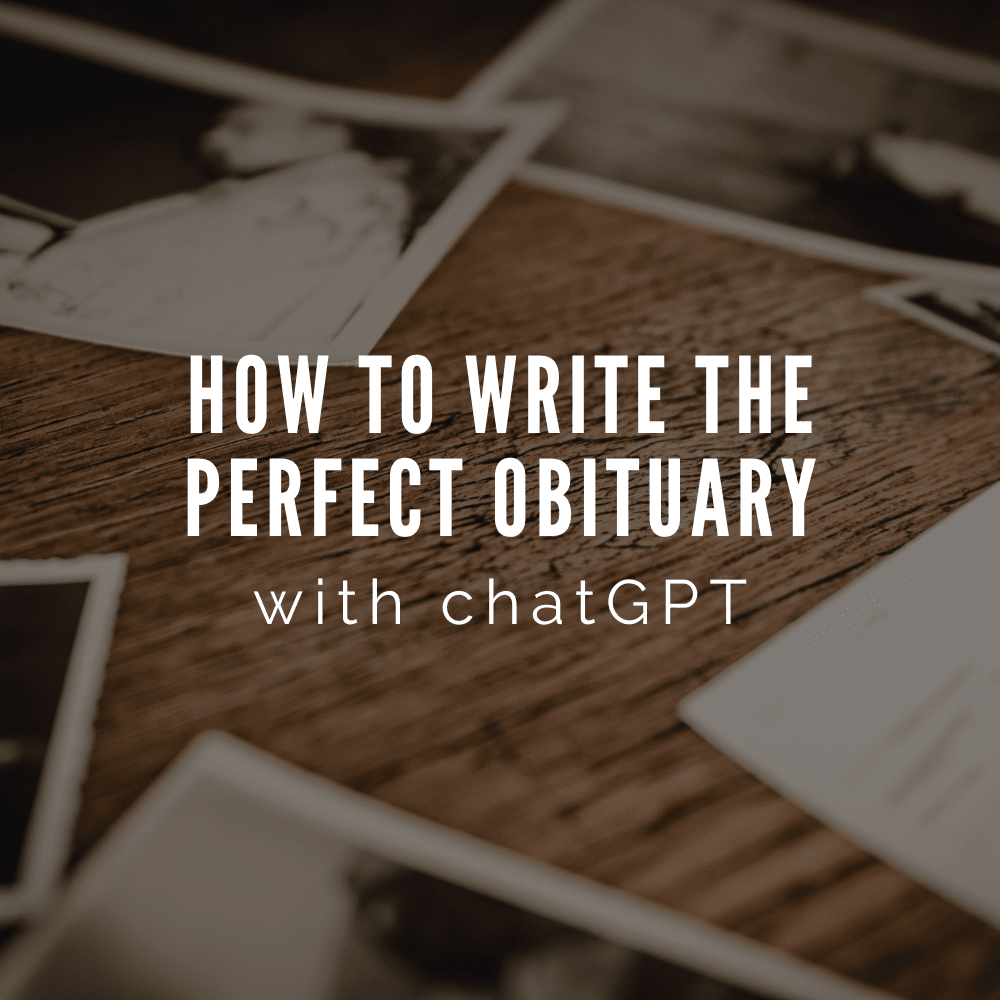How to write the perfect obituary with ChatGPT

Writing an obituary is one of the most meaningful acts we can do for someone we’ve lost. It’s a way to celebrate their life, honor their memory, and share their story with others. But in the midst of grief, finding the right words can feel overwhelming. That’s where ChatGPT can help — offering a gentle, supportive guide to help you write something heartfelt and true.
Here’s how to write the perfect obituary with ChatGPT by your side.
Gather the Details First
Before you start writing, take a moment to collect some basic information. Here’s a list of what’s commonly included in an obituary:
Full name (including maiden name, if applicable)
Date and place of birth
Date and place of death
Names of surviving family members (and those who preceded them)
Career and accomplishments
Hobbies, passions, or values
Funeral/memorial service details (if applicable)
Donation or remembrance requests
Once you’ve got these, you’re ready to begin.
2. Start with a Simple Prompt in ChatGPT
You can start with a straightforward prompt like:
“Can you help me write an obituary for my grandmother, Sarah Johnson? She passed away peacefully at 89. She loved gardening, was a schoolteacher for 30 years, and is survived by her two daughters, four grandchildren, and one great-grandchild.”
ChatGPT will generate a draft you can work from — you can ask for different tones (formal, warm, poetic, brief, etc.) or include more personal stories and details.
3. Add a Personal Touch
While ChatGPT can help with structure and flow, you bring the heart. Don’t be afraid to include:
A favorite quote or saying they used
A special memory that captures their spirit
A message to the readers from the family
You can say something like:
“Can you include a memory of her baking cookies every Sunday for the grandkids?”
ChatGPT can take that and turn it into something beautiful.
4. Adjust the Tone to Match Their Personality
Some obituaries are traditional and reverent. Others are lighthearted, even funny — especially if the person was known for their humor. Tell ChatGPT how you’d like it to sound:
“Can you make this a little more humorous? My dad would’ve hated a serious obituary.”
5. Review, Edit, and Share
Once you have a draft, read it aloud. Does it sound like the person you’re honoring? If not, tweak it. Don’t be afraid to go back and forth with ChatGPT — it’s here to help you refine until it feels just right.
When you’re ready, you can share it in a newspaper, on social media, at the memorial, or as part of a digital legacy or remembrance page.